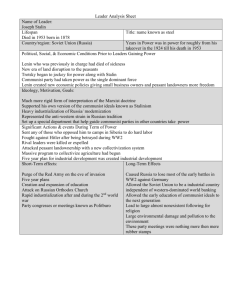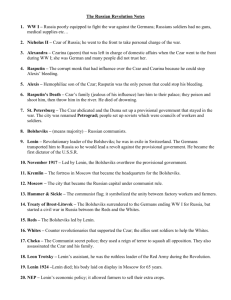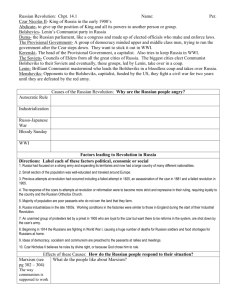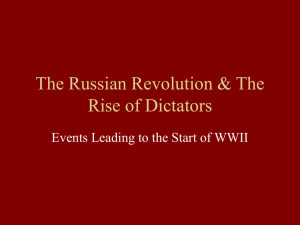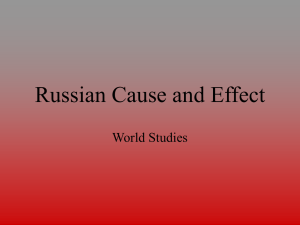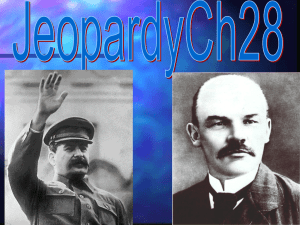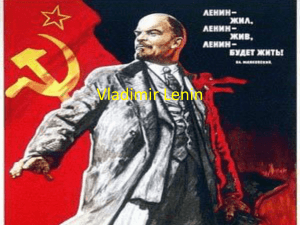WORLD CIVILIZATION WORKSHEET
advertisement
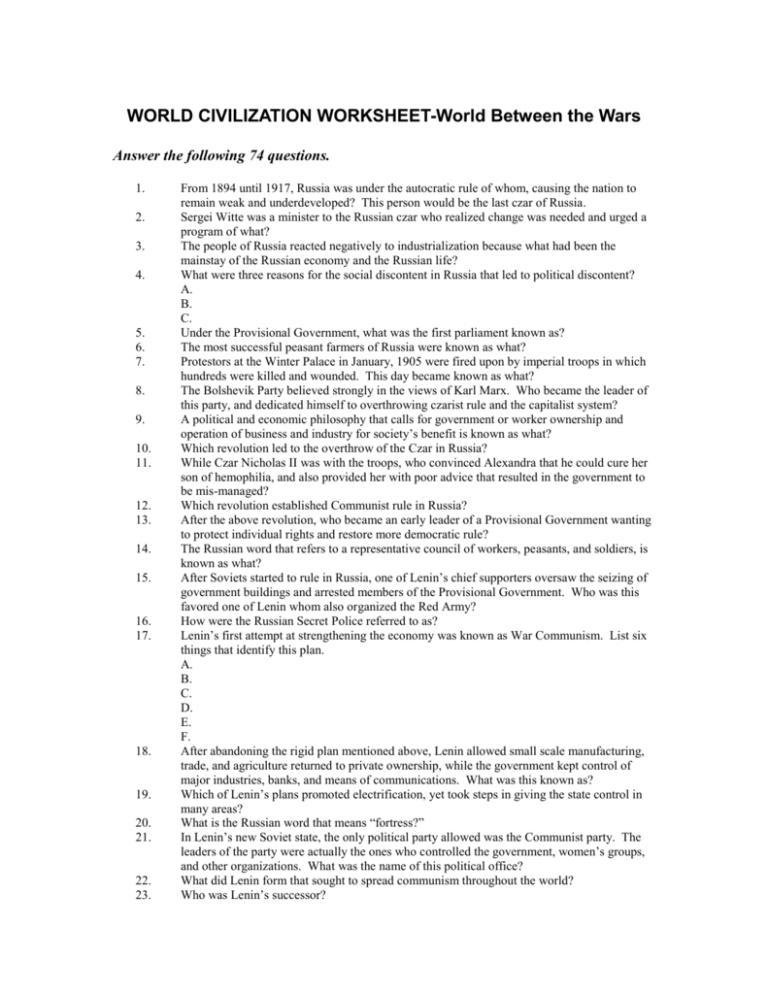
WORLD CIVILIZATION WORKSHEET-World Between the Wars Answer the following 74 questions. 1. 2. 3. 4. 5. 6. 7. 8. 9. 10. 11. 12. 13. 14. 15. 16. 17. 18. 19. 20. 21. 22. 23. From 1894 until 1917, Russia was under the autocratic rule of whom, causing the nation to remain weak and underdeveloped? This person would be the last czar of Russia. Sergei Witte was a minister to the Russian czar who realized change was needed and urged a program of what? The people of Russia reacted negatively to industrialization because what had been the mainstay of the Russian economy and the Russian life? What were three reasons for the social discontent in Russia that led to political discontent? A. B. C. Under the Provisional Government, what was the first parliament known as? The most successful peasant farmers of Russia were known as what? Protestors at the Winter Palace in January, 1905 were fired upon by imperial troops in which hundreds were killed and wounded. This day became known as what? The Bolshevik Party believed strongly in the views of Karl Marx. Who became the leader of this party, and dedicated himself to overthrowing czarist rule and the capitalist system? A political and economic philosophy that calls for government or worker ownership and operation of business and industry for society’s benefit is known as what? Which revolution led to the overthrow of the Czar in Russia? While Czar Nicholas II was with the troops, who convinced Alexandra that he could cure her son of hemophilia, and also provided her with poor advice that resulted in the government to be mis-managed? Which revolution established Communist rule in Russia? After the above revolution, who became an early leader of a Provisional Government wanting to protect individual rights and restore more democratic rule? The Russian word that refers to a representative council of workers, peasants, and soldiers, is known as what? After Soviets started to rule in Russia, one of Lenin’s chief supporters oversaw the seizing of government buildings and arrested members of the Provisional Government. Who was this favored one of Lenin whom also organized the Red Army? How were the Russian Secret Police referred to as? Lenin’s first attempt at strengthening the economy was known as War Communism. List six things that identify this plan. A. B. C. D. E. F. After abandoning the rigid plan mentioned above, Lenin allowed small scale manufacturing, trade, and agriculture returned to private ownership, while the government kept control of major industries, banks, and means of communications. What was this known as? Which of Lenin’s plans promoted electrification, yet took steps in giving the state control in many areas? What is the Russian word that means “fortress?” In Lenin’s new Soviet state, the only political party allowed was the Communist party. The leaders of the party were actually the ones who controlled the government, women’s groups, and other organizations. What was the name of this political office? What did Lenin form that sought to spread communism throughout the world? Who was Lenin’s successor? 24. 25. 26. 27. 28. 29. 30. 31. 32. 33. 34. 35. 36. 37. 38. 39. 40. 41. 42. 43. 44. 45. 46. 47. 48. Stalin started a series of five-year plans that deliberately forced the growth of industry. What was this known as? The Communist government also sought to conform art. Writers, painters, and musicians could only produce works that inspired the people’s devotion to the state, known as what? Farmers who were forced to bring livestock and equipment on one large tract of land were involved in what? Those farmers who resisted the above method were sent to forced labor camps known as what? Many countries around the world faced economic hardships during the interwar years. Installment buying became popular which resulted in added hardships. What was the popular slogan for installment buying? In the United States, who is credited with helping the economy to recover? What is the name of the above president’s economic policy that caused the federal government to play a larger part in the economy than ever before? List at least 5 provisions of the above plan. A. B. C. D. E. In China, who was the leader of the Nationalist Party who had been unable to set up a central government because of the power of the warlords, later picking his successor before his death? Who was Sun-Yatsen’s successor that purged the Communists from the Nationalist Party? Who did the Communists in China grow under and eventually became the first Communist leader of China? What is the ideology that stresses dictatorship and nationalism, and places the strength of the state above the welfare of the people? The words fascism and fascist come from the word fasces, an ancient Roman symbol of power and authority. How is fasces symbolized? Who became the fascist leader in Italy, seizing power in 1922? How was the above leader referred to? Describe at least 5 ways the fascists took control in Italy. A. B. C. D. E. What was the government established in Germany after Germany was defeated in World War I? Who was elected president of the government above in 1919? Who was one of the most outstanding critics of the Weimar Republic and wrote that Germans were a “master race” that must have “the role of the hammer?” Hitler wrote his political views in what book? Hitler organized the National Socialist German Workers Party, better known as what? Who was the president of the Weimar Republic at the time Hitler was named Chancellor of Germany? After becoming the absolute dictator of Germany, Hitler proclaimed the third greatest empire in Germany history, better known as what? What was Hitler referred to as? Identify the Gestapo. 49. 50. 51. 52. 53. Anti-Semitism became the official government policy in Germany. Describe at least 5 ways Jewish people were discriminated against. A. B. C. D. E. On November 10, 1938, the Nazi’s set fire to synagogues and vandalized Jewish homes and stores. This event is referred to as Kristallnacht, which means what? In Spain, a civil war occurred within this country between those who supported fascism and those who wanted to preserve the Republic. A. What was the name of the fascist-type party? B. What other nations of the world supported this party? A. Name the party who was against the fascists? B. What other nations of the world supported this party? In 1939, Spain became a fascist nation. Who became dictator at this time and remained in power until his death in 1975?

